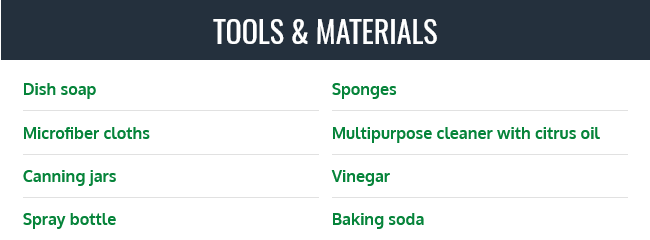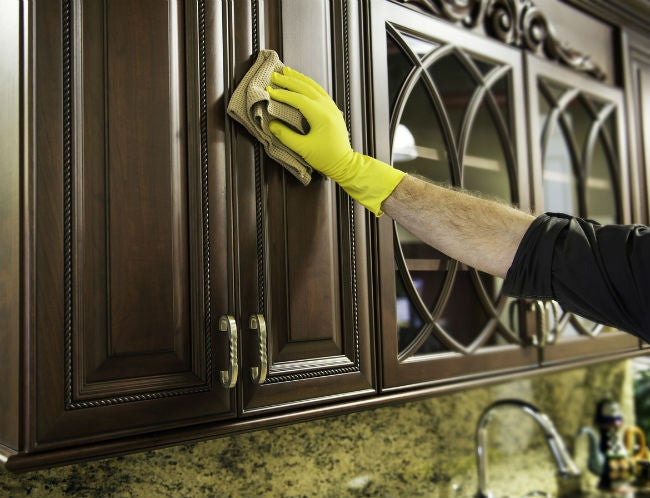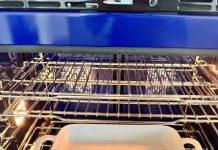Cabinet doors are practically magnets for sticky and unsightly grease stains, and without the proper supplies, cleaning them can be frustrating and fruitless. Here are three ways to deal with grease stains.
Kitchen cabinets are natural grease hotspots due to their proximity to the stove. Ideally, you should clean the fronts of your cabinets with a damp and dry cloth at least every other week, but we all have to deal with layers that simple wiping can’t remove.
Fortunately, some products have active ingredients that are better at removing stains than others, whether you’re trying to remove grease spills from frying or stains that have stuck to a house you just bought for years. Here, in this guide, we detail three highly effective cleaners on how to remove grease stains from kitchen cabinets.
Note: All of these methods are safe to use on finished wood cabinets, but be sure to try them in an inconspicuous area before using them extensively to avoid darkening or discoloring the surface of the cabinets.


Method 1: Detergent and water
Most types of kitchen cabinets can be cleaned with warm water and a few drops of dishwashing detergent, which has a serious degreasing effect.
- Place a few drops of dishwashing detergent (not dishwasher detergent) in a bowl and stir until it smells soapy.
- Using a sponge soaked in this solution, gently remove grease and grime.
- Then use clean water to remove any remaining dishwashing detergent.
- Dry the surface thoroughly with a dry microfiber cloth.

Method 2: Citrus Multipurpose Cleaner
Citrus oil is a natural degreaser that is just what you need to get through layers of stubborn grime. Check your cleaning kit or store for multipurpose cleaners containing citrus oil (see examples on Amazon).
- Spray your kitchen cabinets with the multipurpose cleaner containing citrus oil and leave it on for several minutes.
- Next, use a sponge or microfiber cloth dipped in warm water to gently remove grease and grime.
- Finally, wipe off any remaining dirt with a clean, damp cloth and dry thoroughly.
Note that you can make your own citrus cleaning solution in just a few steps. Place three-quarters of a citrus peel in a canning jar and pour white vinegar over it; you’ll need to let it soak for two to three weeks, but once the soaking is complete, strain the peel and pour the remaining liquid into a spray bottle. Use commercial detergent in the same way as above.

Method 3: Baking soda and water
For more stubborn stains, you may need a more abrasive detergent. Baking soda has just the right amount of granules to remove oil particles from the surface of your cabinets. It is also weakly alkaline, which makes it ideal for dissolving oil stains in water.
- Mix water and baking soda in a 50/50 ratio to form a paste.
- Use a clean microfiber cloth to apply the paste to the oil stain in small circles.
- Replace the rag when it becomes dirty and continue until the surface is free of grease.
- Once the paste has been applied to all cabinet surfaces, remove excess paste with a new damp cloth and remove the last of the moisture with a dry cloth.
Make sure no moisture remains. Any remaining moisture will penetrate the surface of the cabinets and cause visible damage.










